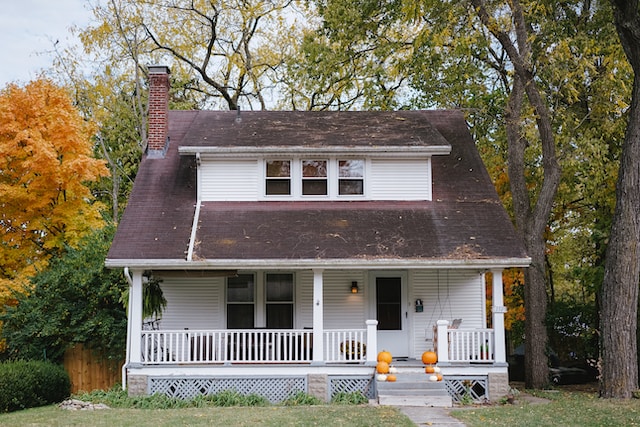
House Fencing: Enhancing Security, Privacy, and Curb Appeal
Fencing plays a crucial role in defining the boundaries of your property while serving a variety of practical and aesthetic purposes. From enhancing security and privacy to adding character to your home’s exterior, a well-chosen house fence can transform your property into a more functional and visually appealing space. In this article, we’ll explore the importance of house fencing, different types of fencing materials, and key considerations for selecting the right fence for your property.
The Importance of House Fencing
House fencing is more than just a property boundary marker; it serves several vital functions that contribute to the overall quality of life and value of your home. Here are some key reasons why house fencing is important:
1. Security
A well-constructed fence acts as a deterrent to trespassers and intruders, enhancing the security of your home. It provides an additional layer of protection, especially for families with children and pets.
2. Privacy
Fencing provides a sense of privacy, shielding your outdoor living spaces from prying eyes. It allows you to enjoy your backyard without feeling exposed to neighbors or passersby.
3. Safety
For families with children or pets, a fence offers a safe and enclosed area for play and recreation. It prevents kids and pets from wandering onto busy streets or into potentially dangerous situations.
4. Curb Appeal
The right fence can greatly enhance the curb appeal of your home. It complements the architecture and landscaping, adding character and beauty to your property.
5. Boundary Definition
Fencing clearly defines property boundaries, helping to prevent disputes with neighbors. It establishes a visual separation between your land and adjoining properties.
Types of Fencing Materials
When selecting a fence for your home, you’ll have a variety of materials to choose from. Each material has its own set of advantages and considerations. Here are some common fencing materials:
1. Wood Fencing
Wood fences are a popular choice for their natural, timeless appearance. They can be customized with various styles, including picket, privacy, and lattice designs. However, wood fences require regular maintenance, including staining or sealing to prevent rot and decay.
2. Vinyl Fencing
Vinyl fences offer the look of wood without the maintenance. They are highly durable, resistant to rot, and easy to clean. Vinyl fences come in various styles and colors, making them a versatile choice.
3. Metal Fencing
Metal fences, such as wrought iron or aluminum, provide an elegant and durable option. They are often used for decorative and ornamental purposes. Metal fences can be customized with intricate designs and offer excellent security.
4. Chain-Link Fencing
Chain-link fences are known for their durability and affordability. They are commonly used for security and containment. Although they lack the aesthetic appeal of other materials, they are highly functional.
5. Composite Fencing
Composite fences combine the durability of materials like vinyl and the appearance of wood. They are resistant to rot and insects, making them a low-maintenance option. Composite fences are available in various styles and colors.
6. Bamboo Fencing
Bamboo fences provide a natural and eco-friendly option. They offer a unique, tropical look and are often used for privacy screening or as decorative accents. Bamboo is a renewable resource, making it an environmentally responsible choice.
Considerations for Choosing the Right Fence
Selecting the right fence for your property involves several considerations:
1. Purpose
Identify the primary purpose of your fence. Is it for security, privacy, aesthetics, or a combination of these? Your purpose will guide your choice of material and style.
2. Local Regulations
Check with your local municipality or homeowners’ association for any regulations or restrictions on fence height, style, and placement. Compliance with local rules is essential.
3. Maintenance
Consider the level of maintenance you’re willing to commit to. Wood fences typically require more upkeep than vinyl or composite materials.
4. Budget
Determine your budget for the project. Fencing costs vary based on materials and the size of your property. Be sure to account for installation costs as well.
Aesthetics
Choose a fence style that complements your home’s architecture and landscaping. The right fence can significantly enhance your property’s curb appeal.
Longevity
Consider the expected lifespan of the material you choose. Some materials, like vinyl and metal, are known for their durability and longevity.
Climate
Factor in your local climate and weather conditions. Some materials may perform better in specific climates, such as those resistant to extreme heat, cold, or moisture.
Installation
Professional installation ensures the fence is securely and correctly placed. Research reputable fencing contractors and obtain multiple quotes for the project.
Conclusion
House fencing serves as a multifunctional asset to your property, offering security, privacy, and curb appeal. With a wide range of materials and styles to choose from, you can select the fence that best suits your needs and preferences. Careful consideration of your goals, budget, and local regulations, along with professional installation, can result in a fence that enhances the overall quality of your home and property.

